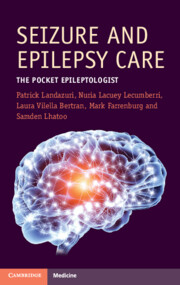Book contents
- Seizure and Epilepsy Care
- Seizure and Epilepsy Care
- Copyright page
- Contents
- 1 How Do I Evaluate a First-Time Seizure?
- 2 How Do I Make an Epilepsy Diagnosis?
- 3 Which Antiseizure Medicines Treat Epilepsy and How Do I Pick?
- 4 How Can I Best Use EEG for Treating Epilepsy Patients?
- 5 What Are Common Epilepsy Imaging Findings in New Onset and Chronic Epilepsy Care?
- 6 How Do I Care for Patients in the Emergency Department and Inpatient Settings?
- 7 How Do I Manage Epilepsy Emergencies Like Status Epilepticus?
- 8 What Is the Best Long-Term Treatment Plan for Epilepsy Patients as an Outpatient?
- 9 What to Do When Your Patient Fails Two Antiseizure Medicines
- 10 Nonepileptic Events and General Psychiatric Care for Epilepsy Patients
- 11 What Are Essential Pediatric Epilepsy Clinical Diagnoses and Treatment Plans?
- Index
- References
4 - How Can I Best Use EEG for Treating Epilepsy Patients?
Published online by Cambridge University Press: 28 January 2023
- Seizure and Epilepsy Care
- Seizure and Epilepsy Care
- Copyright page
- Contents
- 1 How Do I Evaluate a First-Time Seizure?
- 2 How Do I Make an Epilepsy Diagnosis?
- 3 Which Antiseizure Medicines Treat Epilepsy and How Do I Pick?
- 4 How Can I Best Use EEG for Treating Epilepsy Patients?
- 5 What Are Common Epilepsy Imaging Findings in New Onset and Chronic Epilepsy Care?
- 6 How Do I Care for Patients in the Emergency Department and Inpatient Settings?
- 7 How Do I Manage Epilepsy Emergencies Like Status Epilepticus?
- 8 What Is the Best Long-Term Treatment Plan for Epilepsy Patients as an Outpatient?
- 9 What to Do When Your Patient Fails Two Antiseizure Medicines
- 10 Nonepileptic Events and General Psychiatric Care for Epilepsy Patients
- 11 What Are Essential Pediatric Epilepsy Clinical Diagnoses and Treatment Plans?
- Index
- References
Summary
An electroencephalogram (EEG) is a critical tool in epilepsy diagnosis. The three common EEG durations are 25 minutes, 1 hour, and 24 hours. One-hour EEGs are superior in showing epileptiform abnormalities, while 24-hour EEGs are used to characterize seizure and nonepileptic event semiology and guide treatment of status epilepticus. The term EEG montage refers to the way EEG electrodes are ordered for interpretation. Odd numbered electrodes are on the left, with even numbered on the right. Smaller numbers are closer to the midline, while z means the electrode is on the midline.This chapter will explore the numerous normal and variant findings like posterior dominant rhythm (PDR) and wicket spikes. Epileptiform findings like sharp waves or seizure patterns are indicative of epilepsy. Slowing or increased amplitude can indicate cerebral changes that are not epileptiform.Electroencephalogram reports should concisely accurately convey both the electrical findings and their clinical relevance to patient care. Electroencephalogram reports should indicate an epilepsy diagnosis only when clear electrical evidence exists.
- Type
- Chapter
- Information
- Seizure and Epilepsy CareThe Pocket Epileptologist, pp. 57 - 78Publisher: Cambridge University PressPrint publication year: 2023

